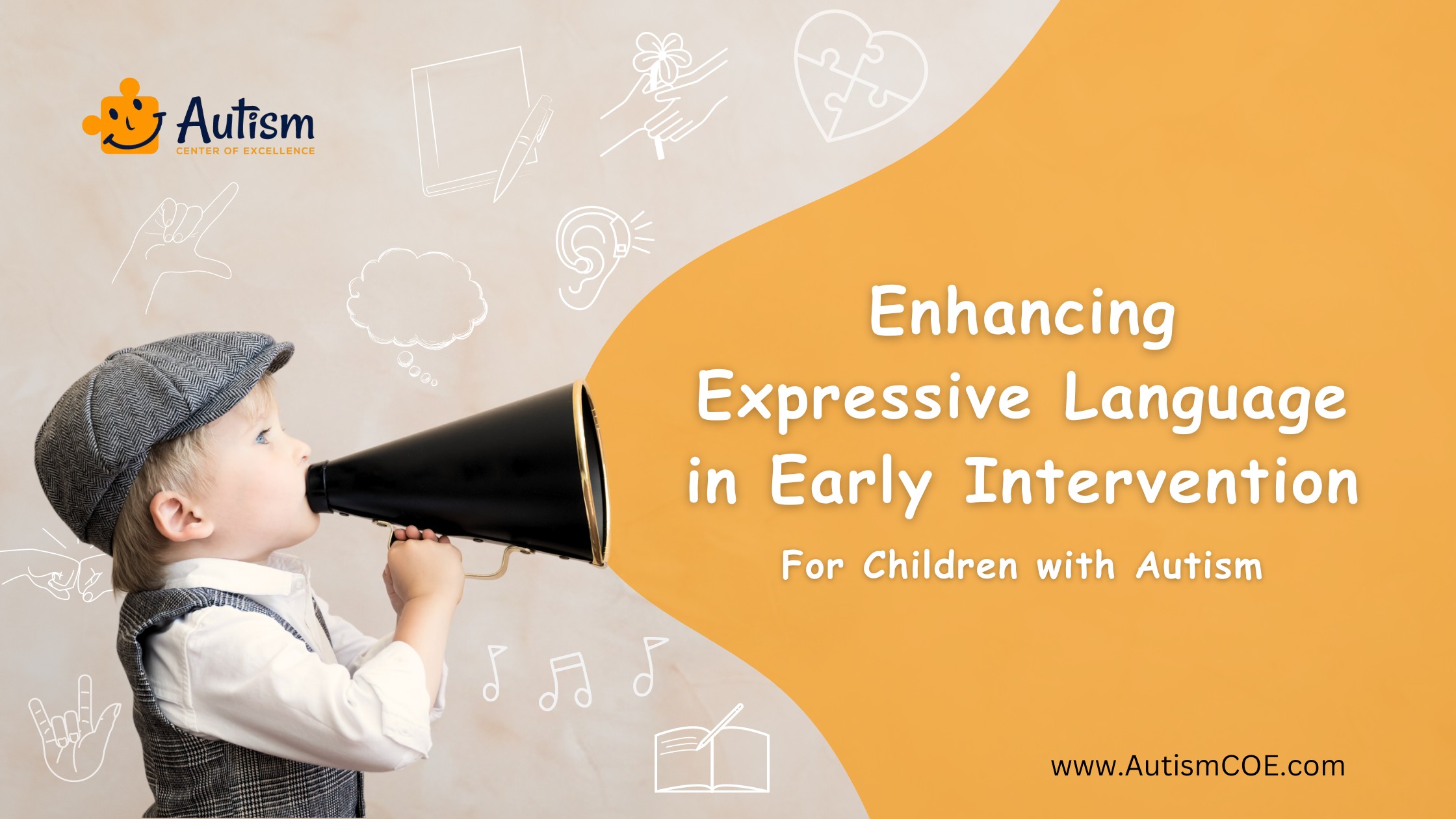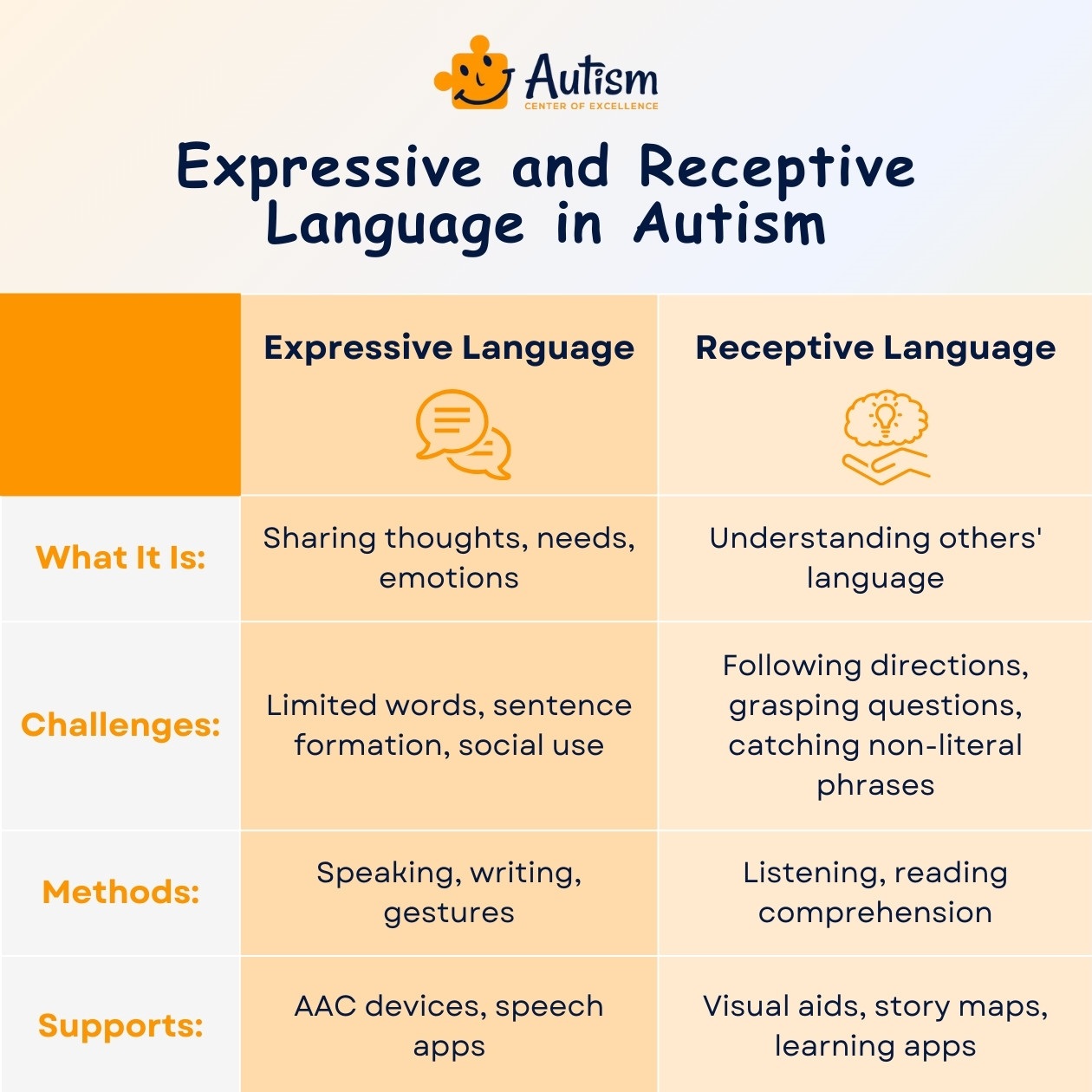Unit 9: Early Intervention for Expressive Language Disorder in Children with Autism

Early Intervention is an important program for children with Autism Spectrum Disorder (ASD). Parents and educators usually have to deal with a lot of challenges, one of which is promoting expressive language. The language development area in addressing the unique needs of children with autism is very important in helping to improve their communication skills and their overall development. Discover smart approaches and acquire a deeper understanding of enhancing expressive language in Early Intervention for Children with Autism on this blog.
What are Expressive Language Disorders?
Expressive Language Disorders are difficulties in Verbal Communication affecting the expression of the individuals by words. This is a typical problem for children living with autism, although it can also be seen in other developmental disabilities and speech and language disorders. Due to the unique needs of children with autism, their Expressive Language Disorder may look different from that of children without ASD.
Children with Expressive Language Disorder are unable to express their needs, opinions, or information by means of the norms of communication, through speech, writing, or gestures. Many children in such situations comprehend the words but can’t communicate their thoughts, feelings, or queries. If left untreated this may result in irritability and social withdrawal. In this regard, Communication Challenges of the condition only make these difficulties worse in the context of autism.
What are Some Signs of Expressive Language Disorder?
Some signs of Expressive Language Disorder in children with autism include;
- Difficulty forming sentences
- Limited vocabulary
- Struggles with word retrieval and organization
- Challenges in social communication
These may show differently in each child, thus requiring an early diagnosis to enable successful intervention. Moreover, the expressive language of a child can be affected by other factors including sensory sensitivities or motor coordination issues.
Overall, it is very important to collaborate with a speech-language pathologist who can evaluate the unique needs of the child and develop an Individualized Intervention Plan. Diagnosed early enough and provided with the right interventions, children with autism can become proficient in their expressive language and find their unique voices.
Is Expressive Language Disorder a Disability?
In many situations, it is viewed as a communication disability since it indeed affects the child in performing daily activities, performing well in school, and socializing. The level of disability can greatly vary among individuals, some of whom may have minor problems that can be handled with Therapy and Support, and others who may need help to communicate throughout their lives. Nevertheless, it should be realized that children with an Expressive Language Disorder are not limited in their Cognitive Capacity and could be very successful in other fields.
By the use of focused approaches and appropriate conditions, children who suffer from autism can develop a lot in expressive language that would facilitate them to become more communicative and improve their social life.

How to Improve Expressive Language in Autism?
The top 5 effective strategies to Enhance Expressive Language in Children with Autism Through Early Intervention, paving the way for clearer communication:
Utilize ABA (Applied Behavior Analysis) Techniques
ABA Therapy is effective in teaching and Developing Communication Skills, including expressive language, in children with autism. Through breaking up language into smaller components that are easy to learn, children slowly develop the skills to be expressive.
Incorporate Play-Based Learning
Children participating in play that promotes communication can develop expressive language naturally. This covers role-play, puppetry, and other interactive activities that require the use of speech.
Employ Visual Supports
Children with autism who are pre-verbal or have limited expressive language skills can use visual aids like picture cards, communication apps, and storyboards to express their needs and ideas.
Create a Supportive Environment
Supporting communication trials without the fear of being judged or corrected, develops a positive learning environment. Small victories that are celebrated can raise confidence and promote more effort.
Engage in Social Stories and Modeling
Social stories that depict usual interactions or sentiments can aid kids in comprehending and using the proper speech in a social situation. Moreover, phrasing and sentence modeling for certain instances can offer a model for children to copy.

Expressive vs Receptive Language in Autism
Expressive Language:
- Ability to convey thoughts, needs, and feelings.
- Challenges include limited vocabulary, difficulty forming sentences, and social communication issues.
- Involves speaking, writing, or gesturing to express thoughts.
- Technology and Supports: Use of AAC (Augmentative and Alternative Communication) devices, and speech-generating applications.
Receptive Language:
- Ability to understand and process language from others.
- Difficulties with following instructions, comprehending questions, and understanding non-literal language.
- Entails listening and understanding spoken/written language from others.
- Technology and Supports: Incorporation of visual schedules, story maps, and interactive learning apps that enhance understanding.
There are instabilities in the expressive and receptive language abilities of children with autism, with many of them good in the receptive skills. Both aspects are critical in Early Intervention Programs for holistic language development as well as improved communication skills.
Join Our Weekly Newsletters!
Subscribe now to stay updated with our latest email updates.
Frequently Asked Questions & Answer
What are Expressive Language Skills?
There are social language skills comprising vocabulary, sentence structure, narrative ability, and social communication. Nevertheless, it is important to realize that every child has different strengths and weaknesses in the development of their expressive language.
Can Expressive Language Disorder Be Cured?
While Expressive Language Disorder is a lifelong condition, children with autism can achieve significant gains in their expressiveness with proper interventions. Detection and early intervention are crucial in the effective control of the disorder.
How Many People Have Expressive Language Disorder?
In the United States, ELD affects 3% of children with higher rates among children with autism. Nevertheless, the symptoms may differ in terms of severity and manifestations, leaving the prevalence of this disorder as a difficult estimate.
What Causes Expressive Language Disorder?
The exact cause of ELD is not known, but it is believed to involve a combination of genetic, neurological, and environmental factors that affect language development. Further research is needed to fully understand the causes of this disorder.
Conclusion
Expressive language development of children with autism is an ongoing process requiring a holistic and gentle approach which includes early intervention, Specialized Strategies, and a supportive environment empowering these children to communicate more effectively and establish meaningful connections with the people around them. Improving expressive language outcomes will enable such children to lead a successful life in all respects.
Specialists, parents, and caregivers are central in the process of supporting each child’s inherent abilities and enabling them to find their place in the world. Thus, we should keep working together in supporting and appreciating the expressive language development of Children with Autism, acknowledging that we all contribute significantly to this challenge.
Please Note: The content of this blog is for informational purposes only and should not be considered a substitute for professional medical advice, diagnosis, or treatment. Consult a qualified health care professional for personalized guidance tailored to your specific situation.

Bhavika Bhasin
Bhavika Bhasin is the Research and Marketing officer at AutismCOE. She works with children and adults with ASD. Her clinical research includes evaluating various available autism screening and diagnosis methods and their efficacy. She is currently developing a novel screening exam that is indicated to be more accurate than the existing available exams. She is also writes articles papers for various publications.

